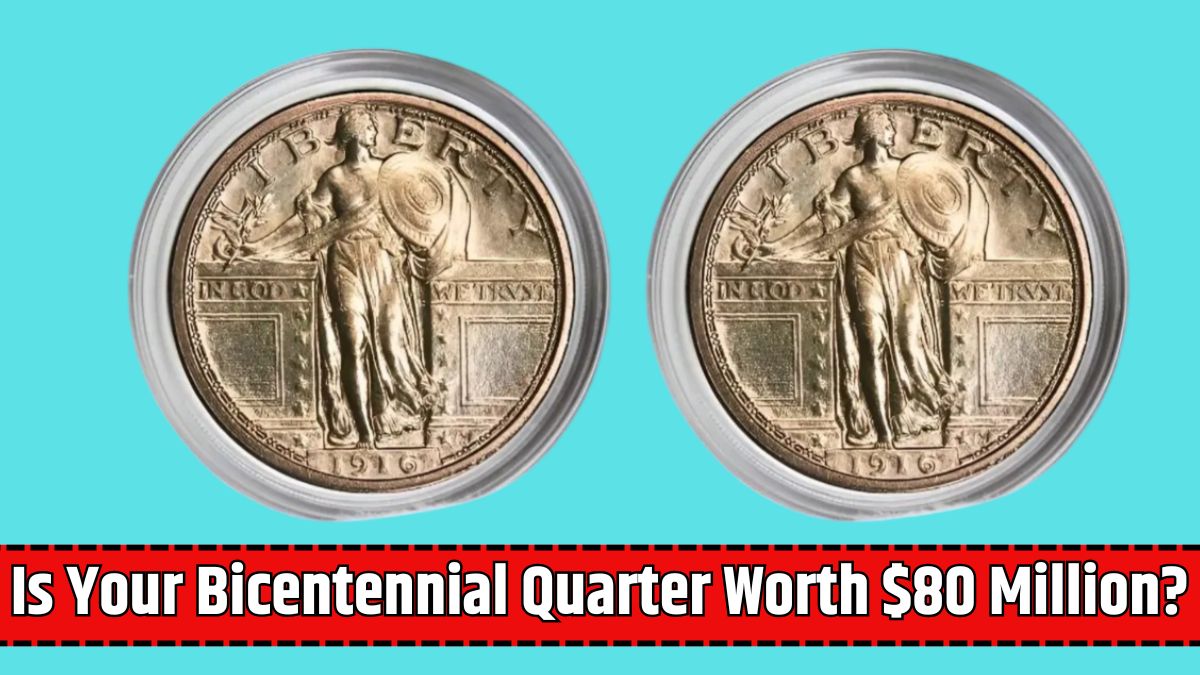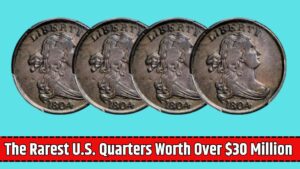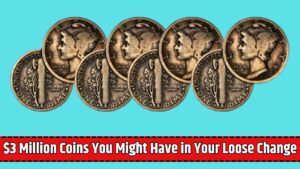The tale of the $80 million Bicentennial Quarter is a mix of intrigue and myth. While no such coin has reached this staggering value, the story has sparked interest in the world of coin collecting.
Whether you’re a seasoned collector or just curious, the Bicentennial Quarter offers a fascinating glimpse into American history and coinage.
What Makes the Bicentennial Quarter Special?
The Bicentennial Quarter, minted in 1976, commemorates the 200th anniversary of American independence.
It features a unique reverse design by Jack L. Ahr, making it stand out from standard quarters. Here’s what makes it special:
- Colonial Drummer: Represents the spirit of the American Revolution.
- Torch and 13 Stars: Symbolize unity among the original colonies.
- Dual Dates “1776–1976”: Mark the bicentennial celebration.
The obverse retains the familiar portrait of George Washington, but the special design and dual dates make this coin memorable. These coins were produced in two main variations:
- Clad Versions: Made of copper and nickel, these were intended for everyday circulation.
- 40% Silver Versions: Found in collector sets, these are especially prized for their silver content.
What Can Increase a Bicentennial Quarter’s Value?
Although most Bicentennial Quarters are worth face value, certain factors can make some examples far more valuable.
1. Error Coins
Minting mistakes are rare and highly collectible. Some common errors include:
- Off-Center Strikes: Where the image is not aligned properly.
- Double Strikes: Create overlapping designs, giving the coin a ghostly appearance.
- Missing Details: Sometimes caused by worn dies, resulting in faint or absent design elements.
Coins with these errors can sell for hundreds or even thousands of dollars at auction.
2. High-Grade Coins
Coins in exceptional condition, graded MS-67 or higher on the 1–70 scale, fetch higher prices. Perfect coins, with sharp details and no visible wear, can be worth several hundred dollars or more.
3. 40% Silver Versions
Silver content gives these coins intrinsic value. Uncirculated or proof coins are particularly sought after, and their value may rise with the price of silver.
4. Unique Provenance
A coin’s history can also affect its value. Quarters tied to famous collections or found in unique circumstances may sell for more than similar coins without provenance.
The $80 Million Bicentennial Quarter: Reality Check
Despite rumors, no Bicentennial Quarter has ever sold for $80 million. This myth likely stems from exaggerated social media claims.
While some coins, like the 1933 Saint-Gaudens Double Eagle, have fetched millions, the Bicentennial Quarter remains a more modest treasure. Still, its historical significance and unique design keep it a favorite among collectors.
Tips for Finding Bicentennial Quarters
Even if you don’t find a multimillion-dollar coin, searching for these quarters can be rewarding. Here’s how to start:
1. Search Spare Change
Check your pocket change for Bicentennial Quarters. Coins kept in excellent condition, such as those stored away for years, are more valuable.
2. Buy Quarter Rolls
Exchange cash for quarter rolls at your bank. Searching through rolls from different locations increases your chances of finding rare coins.
3. Attend Coin Shows and Auctions
Coin shows connect you with experts and offer access to high-grade or error coins. Auctions are great for bidding on rare pieces.
4. Use Essential Tools
Equip yourself with:
- Magnifying Glass: To spot minting errors and small details.
- Protective Coin Holders: To preserve your finds from damage.
Why Coin Collecting Is Worth It
The joy of coin collecting lies in the hunt. From rare errors to high-grade coins, every discovery is a piece of history. Even if you don’t find the mythical $80 million coin, you’ll still uncover fascinating stories and beautiful designs.
















